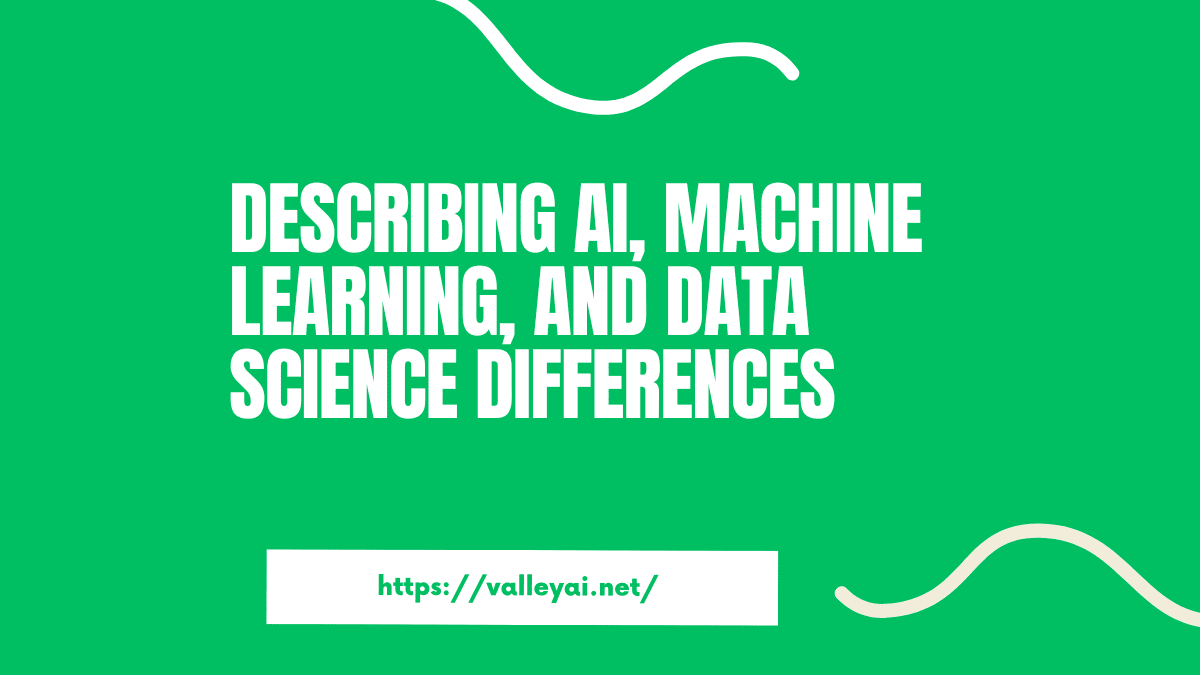You probably often see news about Artificial Intelligence (AI), Machine Learning (ML), or Data Science innovations. Often, these terms can be confused, as the differences between these technologies aren’t clear to everyone. However, this topic is not as complicated as it seems, and we will prove it. This guide describes the main differences between machine learning, artificial intelligence, and data science.
What is Data Science?
Data science combines computer science, statistics, and mathematics to analyze large amounts of information. It uses different methods, including math, programming, artificial intelligence, and machine learning. Data science helps companies make informed decisions based on relevant data, allowing them to improve strategy and get better results.
Examples of data science applications include:
- Tactical optimization, for example, when working with marketing campaigns
- Personal suggestions for clients
- Quality predictive analysis
- Processing social research data
- Automatic decision making
What’s Artificial Intelligence?
Artificial Intelligence allows the creation of programmed systems capable of replacing human intelligence.
AI systems possess the incredible power to effortlessly gather knowledge from various sources, swiftly make intelligent choices, and carry out precise tasks flawlessly. It is an advanced technology that can optimize operations, reduce costs, and simplify many tasks; it can also reduce the demand for additional staff. Moreover, modern Artificial intelligence, represented by neuro-linguistic models, can quickly provide information on any issue. For example, you can ask it how to create rideshare app, how to develop a delivery app, or how they differ. AI will quickly find all the information you need and provide it.
Examples of applications of Artificial Intelligence include:
- Natural language processing
- Route optimization
- Gaming algorithms
- Robotics, etc
What’s Machine Learning?
Machine Learning is concentrated on designing cleverer AI machines that can analyze previous experiences and self-educate. ML helps to simplify fixing and updating AI code since it allows the system to improve independently.
Machine Learning use cases include the same domains as Artificial Intelligence and Data Science. Employing ML results in better productivity from these technologies with minimal human involvement.
Machine Learning vs. Artificial Intelligence vs. Data Science
Now you know the key differences between machine learning, Data Science, and artificial intelligence. Let’s now look at the correlation between these technologies.
Data Science vs. Machine Learning
Machine Learning is a part of Data Science, and this factor forms the basis of their relationship. ML can use the information gathered by Data Science to learn and self-improve. Thus, Machine Learning algorithms entirely rely on this data. At the same time, machine learning cannot process data as efficiently without using Data Science, as this technology helps to perform the entire cycle of information processing – from collection to analysis and decision-making. It can also provide insights into ML from manually collected data.
AI vs. Data Science
Data Science and AI are very close, but they have notable differences. AI aims to create smart machines that can solve complex tasks and make independent decisions. AI device applications include:
- Analyzing big data
- Identifying patterns.
- Gaining insights from data analysis.
- Adapting to new information
Data science enables AI systems to be developed more efficiently and effectively because it provides fast data processing for AI software. Artificial intelligence can then use this data to make predictions and improve performance.
AI vs. machine learning
The terms AI and ML are often used interchangeably, but there are substantial differences between them. AI is a more general notion that involves creating intelligent machines. On the other hand, machine learning (ML) is an independent AI branch, and its primary purpose is self-educating systems that use unique algorithms for processing, structuring, and interpreting large amounts of data.
How Data Science, AI, and ML Can Work Together
Let’s look at the interaction of all three technologies in the example of creating a car that will stop at stop signs on its own. So, the whole process will include the following steps:
Machine Learning. First, the machine must recognize a stop sign regardless of where it is, weather conditions, or other factors. So first, we need to provide the system with stop sign images in different locations. ML technology will analyze these pictures to allow the device to learn to recognize the sign independently.
Artificial Intelligence. After the program learns to recognize the signs, it should learn to apply the brake at the right moment automatically. The car must consider information about road conditions, weather, and vehicle characteristics to apply the brakes in time.
Data Science. Once the system is trained and running, we must evaluate the results. Data Science will analyze all attempts and generate an error report, which helps to recognize the most typical errors. We can identify which training data we should add based on these errors.
That is one of the examples of a correlation between artificial intelligence, machine learning, and data science in one system. You can find more examples in healthcare, logistics, retail, media, and other software.
- Understanding the Landscape of Cloud Vulnerability Management - March 25, 2024
- Quality Assurance Strategies for Startups: Ensuring Software Reliability - March 5, 2024
- Working of NLP to Improve Copywriting in AI Paraphrasing Tool - February 28, 2024

